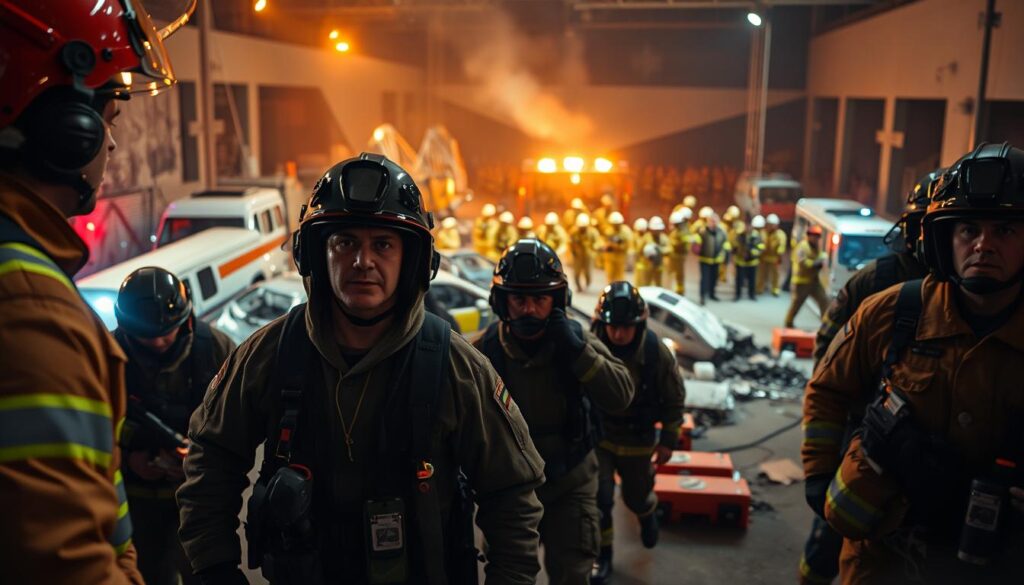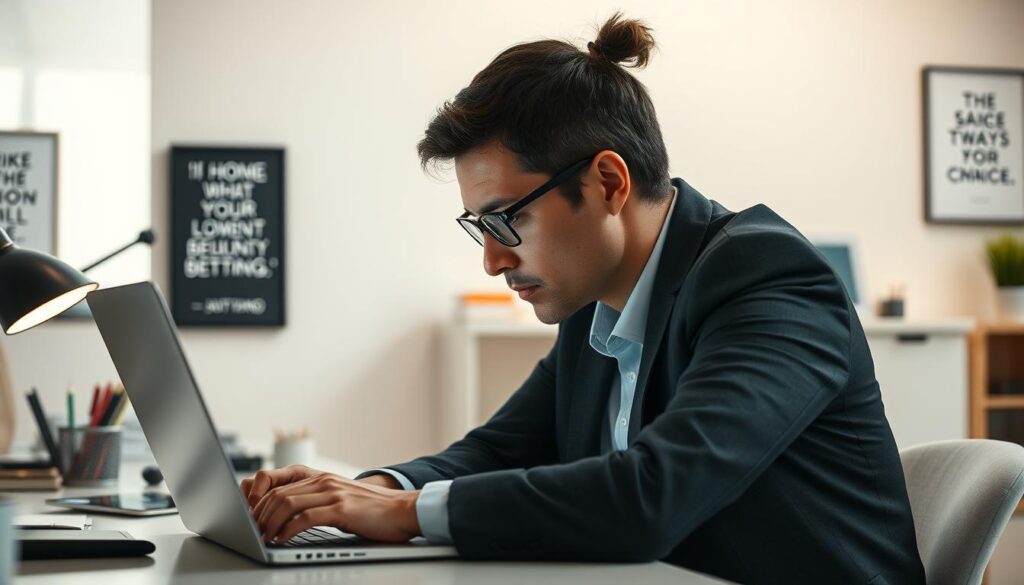Emergency situations can pop up without warning, putting people and communities at risk. But, with the right training and preparedness, we can lessen the damage.
This guide uses advice from the Comprehensive Preparedness Guide (CPG) 101. It will show you how to get good at emergency preparedness drills. This way, you’ll know how to act when emergencies strike.
By following this guide, you’ll learn how to make solid emergency plans. You’ll also know how to do drills and improve your disaster preparedness training.
Key Takeaways
- Understand the importance of emergency preparedness drills in saving lives and reducing the impact of emergencies.
- Learn how to develop effective emergency response plans tailored to your needs.
- Discover the benefits of regular disaster preparedness training and emergency response exercises.
- Gain insights into best practices for conducting emergency preparedness drills.
- Enhance your ability to respond effectively in crisis situations.
Understanding the Importance of Emergency Preparedness Drills
In today’s world, emergency drills are key for handling crises well. They help people and groups act fast and right when emergencies strike. It’s not just about following rules; it’s about being ready to save lives.
Luvungu Ngombe stresses how vital fire safety and getting ready for emergencies are. Drills are a big part of this readiness.
Why Everyone Should Participate
Everyone should join in emergency drills, not just some. It’s for everyone, from work teams to community members. Drills help people learn their roles and how to act in emergencies.
Key reasons for participation include:
- Learning about emergency steps and plans
- Finding out what needs work in emergency plans
- Getting better at working together in emergencies
Risks of Inadequate Preparedness
Not being ready for emergencies can be very risky. Without drills, people and groups might not know how to act. This could lead to more injuries, damage, and even deaths.
| Risks | Consequences |
|---|---|
| Inadequate emergency planning | Delayed response, increased damage |
| Lack of training and drills | Confusion, poor decision-making |
| Insufficient resources | Inability to respond effectively |
Key Benefits of Drills
Drills have many good points, like quicker responses and better teamwork. They help find and fix weak spots in emergency plans. This makes everyone safer.
Some of the key benefits include:
- Being more ready and able to respond
- Working better with emergency teams
- Feeling more confident in emergencies
Types of Emergency Situations to Prepare For
Starting to get ready for emergencies means knowing what could happen. It’s clear that being ready isn’t the same for everyone.
There are many kinds of emergencies, and knowing them helps make a good plan. The Comprehensive Preparedness Guide (CPG) 101 says a detailed plan is important.
Natural Disasters
Natural disasters like hurricanes, earthquakes, and floods need special plans. Knowing how to leave quickly and where to go is key.
Preparation Tips for Natural Disasters:
- Make a family plan with contact info and a meeting spot.
- Have emergency supplies like food, water, and first aid kits ready.
- Keep up with weather news and alerts.
Medical Emergencies
Medical emergencies like heart attacks, strokes, and serious injuries need fast action. Being ready means having the right tools and knowing what to do.
Key Considerations for Medical Emergency Preparedness:
| Emergency Type | Preparation Measure | Response Action |
|---|---|---|
| Cardiac Arrest | Have an AED on hand | Call 911, use AED |
| Severe Injury | Keep first aid kits accessible | Provide first aid, call for help |
Workplace Incidents
Workplace emergencies like fires or spills need special plans. Doing workplace emergency drills regularly helps make sure everyone knows what to do.
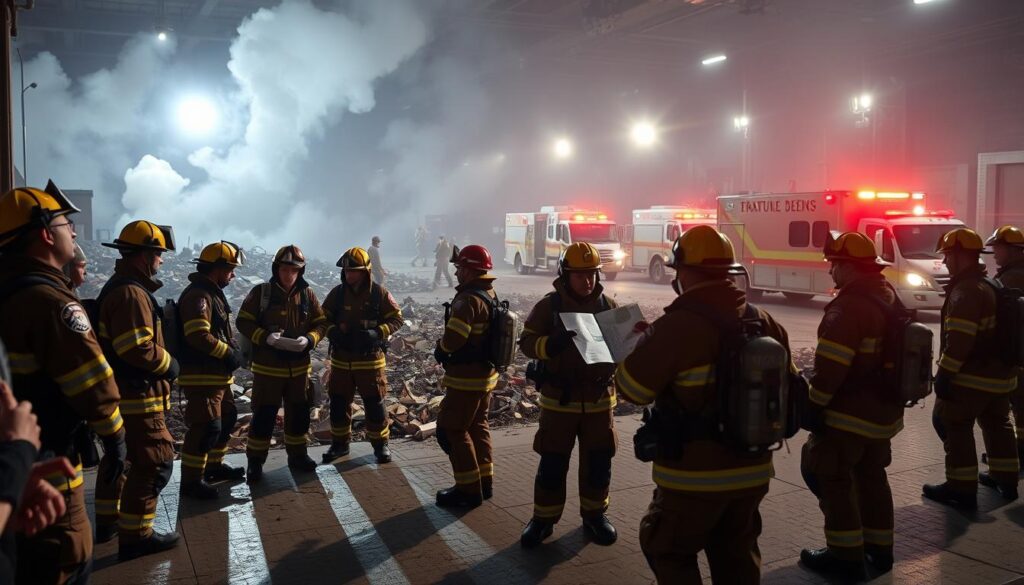
By knowing what emergencies could happen and preparing for them, we can lower risks and respond faster.
Creating an Effective Emergency Preparedness Plan
To handle emergencies well, having a solid preparedness plan is key. This plan acts as a guide for responding to emergencies. It makes sure everyone knows their part.
Identifying Potencial Hazards
The first step is to spot possible dangers that could hit your place or community. You need to do a detailed risk check. This helps figure out the chances and effects of different emergencies.
Common hazards to think about include:
- Natural disasters like earthquakes, hurricanes, and floods
- Medical emergencies, like pandemics and outbreaks
- Workplace incidents, such as fires and chemical spills
Setting Objectives for Drills
After spotting hazards, set clear goals for drills. Goals should be specific, measurable, achievable, relevant, and timely (SMART). This makes drills focused and useful.
For example, a goal might be to get out of a building fast. Or to make sure everyone knows their part in an emergency.
Involving Stakeholders in Planning
Getting stakeholders involved is key for a good emergency plan. Stakeholders are people like employees, community members, and emergency services.
By working with stakeholders, you make sure the plan covers everyone’s needs. This makes the plan more complete.
| Objective | Description | Responsible Party |
|---|---|---|
| Conduct risk assessment | Find out what dangers are possible and how big they could be | Safety Officer |
| Develop emergency plan | Make a detailed plan based on the risk check | Emergency Planning Committee |
| Train personnel | Teach people about emergency steps and rules | Training Department |
Designing Emergency Drills for Different Scenarios
To be ready for anything, it’s key to create emergency drills that mimic real-life situations. These drills help people learn how to handle emergencies like fires, active shooter situations, and severe weather. They are vital for getting everyone prepared.
Creating these drills needs careful thought. They should mirror the real challenges of emergencies. This way, organizations can improve their emergency plans and make sure everyone is ready.
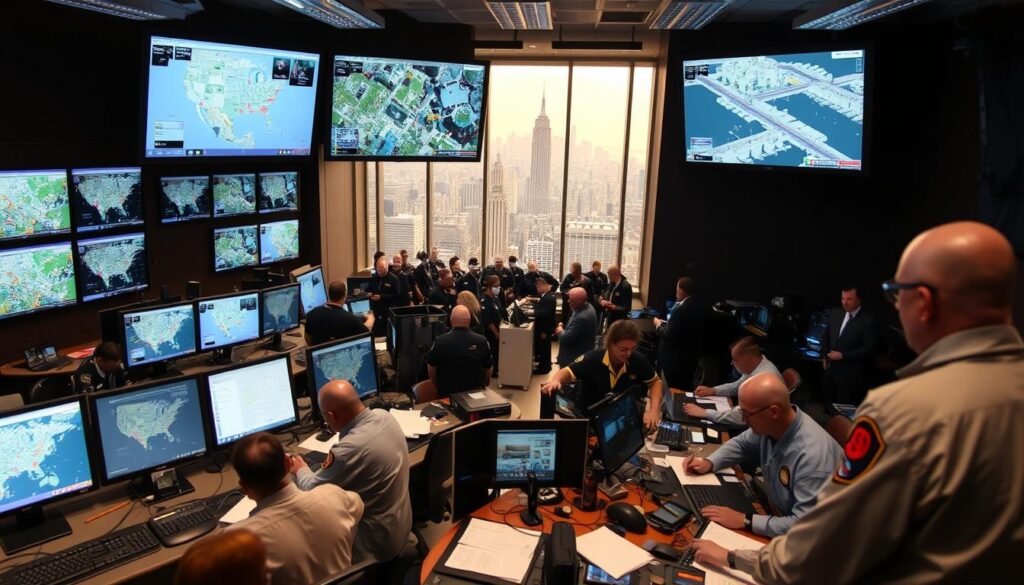
Fire Evacuations
Fire drills are a big part of being prepared. They should feel like a real fire, with smoke, darkness, and a sense of urgency. Fire safety experts like Luvungu Ngombe say it’s important to make drills as real as possible. People should learn how to move through smoke and use exits well.
Active Shooter Situations
Drills for active shooter situations need careful planning. They should feel like the real thing, with sounds and chaos. It’s important to teach people how to react, like when to run, hide, or stand up to the threat.
Severe Weather Procedures
Drills for severe weather, like tornadoes or hurricanes, should focus on the dangers of these events. They should teach people the safest ways to get to shelters and how to protect themselves from debris. Regular drills can make people safer and quicker to respond.
By making emergency drills for different situations, organizations can get better at being ready for emergencies. This makes everyone safer and reduces the chance of harm or damage during real emergencies.
Best Practices for Conducting Emergency Drills
Effective emergency drills need careful planning and realistic scenarios. They also require active participation from everyone involved. By following best practices, organizations can improve their emergency response. This ensures a smooth response during real emergencies.
Timing and Frequency of Drills
Drills should be done at the right times to keep everyone ready. The Comprehensive Preparedness Guide (CPG) 101 says drills should happen often. The exact frequency depends on the emergency type, organization size, and laws.
- Drills should be done at least twice a year for high-risk emergencies.
- The best times for drills are when everyone can participate and the organization is not busy.
- Changing the drill scenarios keeps everyone interested and ready for different emergencies.
Realistic Scenario Simulations
Realistic simulations are key for effective drills. They should closely match real emergencies to test how well people respond. This helps in making better decisions under pressure.
Key elements of realistic scenario simulations include:
- Adding unexpected events to challenge participants.
- Using real settings and equipment.
- Showing the effects of decisions made during the drill.
Engaging Participants in the Process
Getting everyone involved is essential for successful drills. This means making drills interactive, giving clear instructions, and asking for feedback.
Strategies for engaging participants include:
- Having debriefing sessions after drills to talk about performance and how to improve.
- Letting participants help plan drills to address their concerns and ideas.
- Thanking and rewarding those who do well during drills.
By following these best practices, organizations can get better at emergency preparedness. This helps reduce the risk and impact of emergencies.
Evaluating the Effectiveness of Drills
Measuring the success of emergency drills is key. A detailed evaluation is essential for disaster preparedness training.
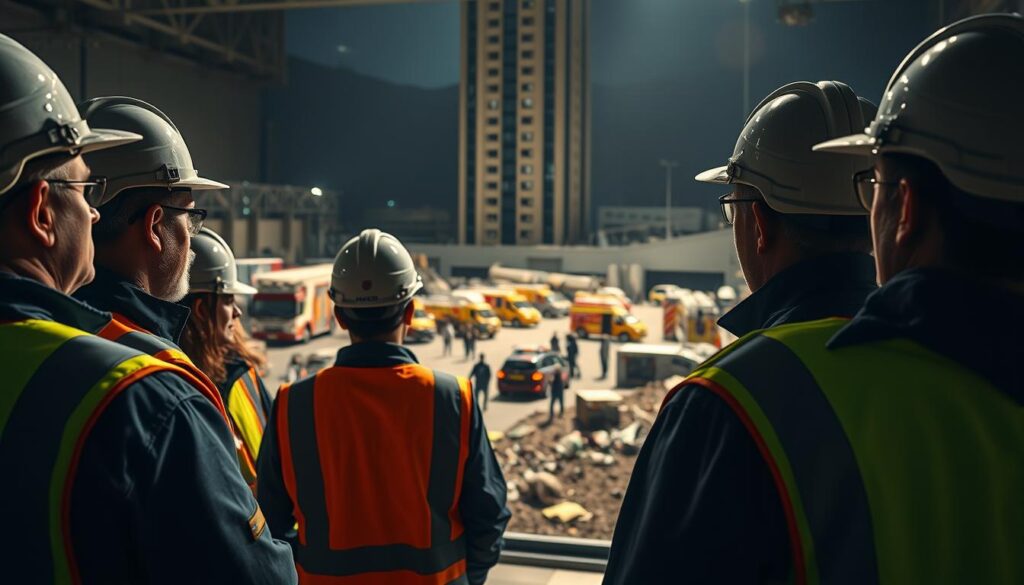
Gathering Feedback from Participants
Getting feedback from those who take part in drills is vital. Surveys, interviews, or focus groups can help. They let us know what works well and what needs improvement.
- Conduct surveys right after the drill to catch first thoughts.
- Use interviews for deeper insights.
- Hold focus groups for a group discussion.
Observing Performance and Reactions
Watching how people react during drills is also important. We look at their decisions and how they handle the emergency. This helps us see what’s working and what’s not.
- Train observers to watch how participants respond.
- Use checklists for consistent evaluation.
- Review video of the drill for detailed analysis.
Making Adjustments for Future Drills
After feedback and observation, it’s time to make changes. We update the drill, procedures, and training as needed. This keeps everyone better prepared for emergencies.
For more on making a personal preparedness plan, visit crafting a personalized preparedness plan.
Enhancing Communication During Drills
Emergency drills need more than a plan; they need clear communication. Everyone must know their roles and the drill’s goals. This ensures smooth execution of the exercise.
Establishing Clear Signage
Clear and visible signage is key for effective communication during drills. Exit signs, directional arrows, and warning signs must be easy to read. They should follow local rules and standards.
Using Technology for Alerts
Technology boosts communication in emergency drills. Alert systems send messages quickly to everyone involved. These can include SMS, email, or mobile apps. They keep everyone updated in real-time.
Encouraging Open Dialogue Among Participants
Open dialogue is essential for drill success. Participants should feel free to share their thoughts and concerns. Debriefing sessions after the drill help gather feedback and improve communication strategies.
Improving communication in drills leads to better crisis management. It makes the environment safer for everyone involved.
Connecting with Local Emergency Services
It’s key to connect with local emergency services for good emergency drills and training. Working well with local responders makes emergency plans stronger. This leads to a better response to emergencies.
Good teamwork with local emergency services is important. One big part is building relationships with first responders. This helps with clear communication and better coordination during drills and real emergencies.
Building Relationships with First Responders
Getting to know first responders well makes drills more effective. It’s about knowing their strengths, weaknesses, and how they communicate. This way, drills can match up better with what local services can do.
Coordinating Drills with Local Agencies
Working together on drills with local agencies is also key. This makes sure drills are real, relevant, and test how well plans work together. It’s about making drills that really test readiness.
This teamwork can mean joint planning sessions. Here, groups and local agencies plan drills together. They aim to meet common goals and boost response skills.
Leveraging Resources and Expertise
Local emergency services have great resources and knowledge. They can help make drills better. This includes special gear, training spots, and experts who share the best ways to respond.
Using these resources can make drills more effective. This helps organizations get better at handling emergencies.
Training and Resources for Ongoing Education
Emergency preparedness is not a one-time task. It needs ongoing education and training. To be ready for emergencies, we must keep learning and use the resources we have.
Workshops and Seminars on Emergency Preparedness
Workshops and seminars are great for learning about emergency preparedness. They offer hands-on experience and insights from experts. For example, a seminar on crisis management drills can teach you how to make good emergency plans.
Studies show that regular emergency drills help organizations respond faster and better. “Regular training and drills are key to knowing how to act in emergencies,” says Jane Doe, a disaster preparedness expert.
Online Courses and Certification Programs
Online courses and certification programs are also good for learning about emergency preparedness. They cover many topics, from basic first aid to advanced crisis management. These courses let you learn at your own pace.
If you want to learn more about emergency preparedness, check out https://survivalistbottles.com/ill-keep-you-safe-emergency-response-essentials/. This site has useful info on emergency response essentials to help your training.
Utilizing Community Resources for Training
Using community resources can also help with emergency preparedness. Local centers, libraries, and emergency agencies often have training and materials. By using these resources, you can learn the latest emergency preparedness techniques.
John Smith, a disaster preparedness expert, says, “Community involvement is essential for a resilient society. Working together and sharing resources helps us all respond better to emergencies.”
Developing a Culture of Preparedness
Creating a culture of preparedness is key for effective emergency management. It’s not just about drills; it’s about making sure everyone knows how to handle crises. By making drills and exercises part of daily life, organizations can get stronger.
Learning from Experience
Learning never stops. After drills, it’s important to talk about what went right and what didn’t. This way, plans can get better, making everyone more ready for emergencies.
Fostering a Supportive Environment
A supportive place is vital for being prepared. This means giving people the tools and training they need to act in emergencies. Drills help build confidence and skill.
Sharing Success Stories
Telling stories of success and lessons learned from drills motivates people. It shows the value of being prepared. This keeps everyone focused and involved in staying ready.
FAQ
What is the primary purpose of emergency preparedness drills?
Emergency preparedness drills help people and organizations get ready for emergencies. They aim to save lives and lessen the damage caused by emergencies.
How often should emergency preparedness drills be conducted?
Drills should happen at least once a year. But, they might need to happen more often for high-risk situations.
What are the key elements of an effective emergency preparedness plan?
A good plan identifies dangers, sets drill goals, involves everyone, and has clear communication rules.
How can I ensure that my emergency preparedness drill is realistic and effective?
Make the drill real by simulating a real emergency. Get everyone involved and ask for feedback to improve.
What role do local emergency services play in emergency preparedness drills?
Local emergency services are key. They bring expertise, resources, and help coordinate drills. Working with them makes drills better.
What types of emergency situations should I prepare for?
Prepare for natural disasters, medical emergencies, and workplace incidents. This includes fires, active shooters, and severe weather.
How can I evaluate the effectiveness of my emergency preparedness drill?
Check how well the drill worked by listening to feedback and observing. Then, make changes for the next drill.
What are some best practices for conducting emergency drills?
Use clear signs, technology for alerts, and encourage talking among participants. Make everyone feel involved.
How can I stay up-to-date with the latest emergency preparedness training and resources?
Attend workshops, take online courses, and use community resources. This keeps you informed and trained.
Why is it essential to develop a culture of preparedness?
It promotes learning, supports a team, and shares success. This boosts emergency readiness.
What is disaster preparedness training?
It teaches how to face and handle disasters. This includes natural disasters and emergencies.
How can crisis management drills benefit my organization?
Drills improve readiness, lower risks, and foster a culture of preparedness. This helps your organization.
What is the role of emergency scenario simulations in emergency preparedness?
Simulations let people practice in a safe space. They’re key for learning to handle emergencies.
How can I coordinate emergency drills with local agencies?
Build relationships with first responders and communicate with local services. Use their resources and knowledge.
What is the importance of workplace emergency drills?
Drills prepare employees for emergencies. They reduce risks and promote readiness.
How can emergency drill evaluation help improve emergency preparedness?
Evaluation finds areas to improve, gathers feedback, and guides future drills. It makes drills better.

